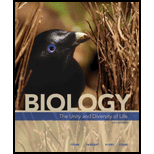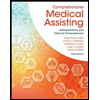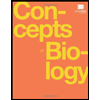
Concept explainers
To determine: How the effects of low-level tobacco smoking on forced expiration volume differ from those of low-level marijuana smoking.
Concept introduction: Smoking has a wide range of negative health effects. It increases the risk of lung infection and many types of cancer. Tobacco contains more than 40 carcinogens. Tobacco smokers have a higher risk of cardiovascular disease. Another smoking material is marijuana which contains carbon monoxide and an assortment of carcinogens, including arsenic and ammonia, but few studies have not found an increased risk of lung cancer who only smokes marijuana. The people who smoke both marijuana and tobacco seem to have more respiratory problems than those who smoke only tobacco.
Explanation of Solution
Forced expiration volume is the volume of air that an individual can exhale after a deep inhalation. Smoking alters lung function that results in breathing problem that can change the forced expiration volume.
The data represented is based on the study done for effects of smoking to assess lung function by the Coronary Artery Risk Development in Young Adults (CARDIA). The study involves about 5,000 people aged between 18 to 30 years old in a long-term study. The study was followed for 20 years and periodical assessment of habit, health, and lung function was conducted to know how the lifetime use of tobacco and marijuana affects the forced expiration.
Refer to Fig. 38.19 “Association between marijuana or tobacco smoking and the change in forced expiration volume (FEV)” in the textbook, the low-level of tobacco use causes a direct decrease of FEV, but the low level of marijuana use causes an increase in FEV first, and then a decrease in FEV. In comparison to tobacco use, the decrease in FEV is low in the marijuana user.
Tobacco causes decrease in FEV right away, but marijuana causes an increase in FEV first, and then a decrease in FEV.
Want to see more full solutions like this?
Chapter 38 Solutions
Biology: The Unity and Diversity of Life (MindTap Course List)
- Smoking and Lung Function Data from the Coronary Artery Risk Development in Young Adults (CARDIA) study was used to assess the effects of smoking on lung function. In 1985--86, the study enrolled about 5,000 people aged 18 to 30 years old in a long term study. Over the next 20 years, study subjects were periodically asked about their habits and their health, including their lung function, was assessed. FIGURE 38.19 is a model based on data from this study, of how lifetime tobacco and marijuana use affects forced expiration. FIGURE 38.19 Associations between marijuana or tobacco smoking and the change in forced expiration volume (FEV). One joint-year means an average of one joint smoked daily for one year. One pack-year is an average of one pack smoked per day for one year. Dots at the top of the graph show the distribution of observations. Lines below show the modeled association. Blue is marijuana and black is tobacco. The change in FEV1 is given as milliliters of air. Based on this model, how would smoking two packs of cigarettes a day for 20 years (40 pack-years or exposure) affect FEV1? What level of marijuana smoking would produce an equivalent effect?arrow_forwardLycopene, which is abundant in tomatoes, is thought to have a potential benefit in protecting against many types of cancers. In the study, the results of which are shown in the Figure, mice were exposed to tobacco smoke or normal air. The amount of lung tissue damage caused by each exposure was measured in mice that were given tomato juice (1) or water (2). To estimate the destruction of the alveolar wall, a destructive index (DI) was calculated from histological slides of the lung. All lungs will show some level of damage, but a DI above 10% is considered significant destruction. What is the effect of tobacco smoke on the lung tissue in these mice? Source: Based on S. Kasagi et al. 2006. Tomato juice prevents senescence-accelerated mouse P1 strain from developing emphysema induced by chronic exposure to tobacco smoke. American Journal of PhysiologyLung Cellular and Molecular Physiology 290:L396L404.arrow_forwardAt various points throughout Earth’s geological history, atmospheric and oceanic oxygen levels have been different than they are today. If future oxygen levels in the ocean become higher than they are today, what effect do you think this will have on the relative frequencies with which ram ventilation or buccopharyngeal pumping are used by aquatic vertebrates? Please explain your answer.arrow_forward
- True or False: By comparing the evaginated respiratory structures of aquatic organisms (e.g. gills, skin folds) with the invaginated respiratory structures of terrestrial organisms (below), we can conclude that invaginated lungs and tracheal systems are an adaptation to terrestrial life.arrow_forwardWhich of the following provides the best evidence that the circulatory system and the respiratory system work together to carry out their functions?arrow_forwardA student undertakes a project to determine the effect of carbon dioxide on respiration rate using the following methodology. A volunteer inhaled air from a bag containing a predetermined amount of carbon dioxide (with partial pressure in torr) and the number of breaths per minute was recorded. Her data are given below: Partial pressure CO2 (torr) Respiration rate (breaths/minute) 30 8.1 32 8.0 34 9.9 36 11.2 38 11.0 40 13.2 42 14.6 44 16.6 46 16.7 48 18.3 50 18.2 Choose the best statistical test for this study. a. Correlation b. Simple Linear Regression c. Non-Linear Regression d. General Linear Model Regressionarrow_forward
- When researchers first discovered that airflow through a bird’s paleopulmonal parabronchi is unidirectional, the question arose as to whether gas exchange is countercurrent, cocurrent, or cross- current. Some ingenious investigators carried out experiments in which they measured the efficiency of gas exchange between air and blood in duck lungs when parabronchial airflow was in its normal direction and when the direction of parabronchial airflow was artificially reversed. The efficiency did not change. How is this evidence against countercurrent and cocurrent gas exchange? How is this evidence for cross-current exchange?arrow_forwardCan you explain how scaling laws apply to the lungs/respiratory system? What are the implications of scaling laws to humans becoming really small or big?arrow_forwardWhich of the following statements about the oxygen-binding curves is FALSE? Select one: a. During normal activity (not exercising) the blood PO2 rarely falls below 40 mmHg. b. The PO2 and hemoglobin dissociation curve for myoglobin is to the left of fetal hemoglobin. c. The blood returning to the lungs is still 75% saturated with oxygen. d. A larger decrease in PO2 is needed for hemoglobin to drop from 100% to 75% O2 capacity than from 75% to 50% O2 capacity. e. During high metabolic activity the PO2 and hemoglobin dissociation curve would be expected to shift to the left of normal.arrow_forward
- Which of the following factors would increase the oxygen carrying capacity of the blood? Question 6 options: A 50% increase in hematocrit in combination with blood cells that have half the concentration of hemoglobin? A 20% increase in myoglobin levels. An increase in temperature. An increase in pH none of the above would increase the total amount of oxygen carried by the bloodarrow_forwardWith COPD, there is a decreased air flow from the lungs. This coyly be caused by which of the following reasons? Select all that apply.arrow_forwardWhich of the following concerning hemoglobin is true? a) BPG decreases at high altitudes and causes more O2 offloading in tissues b) As pH increases, [CO2] increases in tissues, causing more O2 release in tissue c) The R state is stabilized by CO2 binding, whereas the T state is stabilized by O2 binding d) About 38% of oxygen dissociates from hemoglobin in tissues e) Hemoglobin has a higher affinity for oxygen than carbon monoxide My guess is D.arrow_forward
 Biology: The Unity and Diversity of Life (MindTap...BiologyISBN:9781337408332Author:Cecie Starr, Ralph Taggart, Christine Evers, Lisa StarrPublisher:Cengage Learning
Biology: The Unity and Diversity of Life (MindTap...BiologyISBN:9781337408332Author:Cecie Starr, Ralph Taggart, Christine Evers, Lisa StarrPublisher:Cengage Learning Biology: The Dynamic Science (MindTap Course List)BiologyISBN:9781305389892Author:Peter J. Russell, Paul E. Hertz, Beverly McMillanPublisher:Cengage Learning
Biology: The Dynamic Science (MindTap Course List)BiologyISBN:9781305389892Author:Peter J. Russell, Paul E. Hertz, Beverly McMillanPublisher:Cengage Learning Comprehensive Medical Assisting: Administrative a...NursingISBN:9781305964792Author:Wilburta Q. Lindh, Carol D. Tamparo, Barbara M. Dahl, Julie Morris, Cindy CorreaPublisher:Cengage Learning
Comprehensive Medical Assisting: Administrative a...NursingISBN:9781305964792Author:Wilburta Q. Lindh, Carol D. Tamparo, Barbara M. Dahl, Julie Morris, Cindy CorreaPublisher:Cengage Learning Concepts of BiologyBiologyISBN:9781938168116Author:Samantha Fowler, Rebecca Roush, James WisePublisher:OpenStax College
Concepts of BiologyBiologyISBN:9781938168116Author:Samantha Fowler, Rebecca Roush, James WisePublisher:OpenStax College




